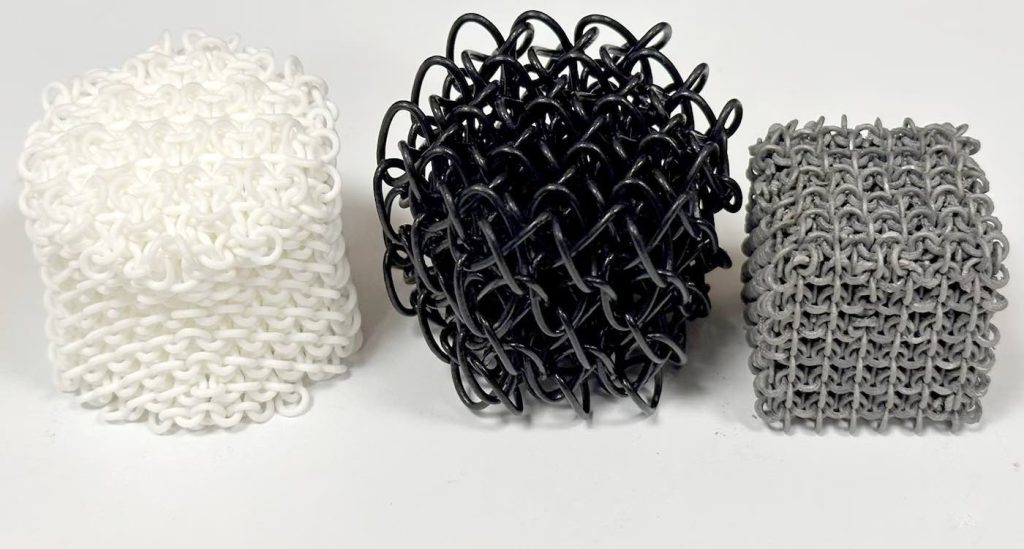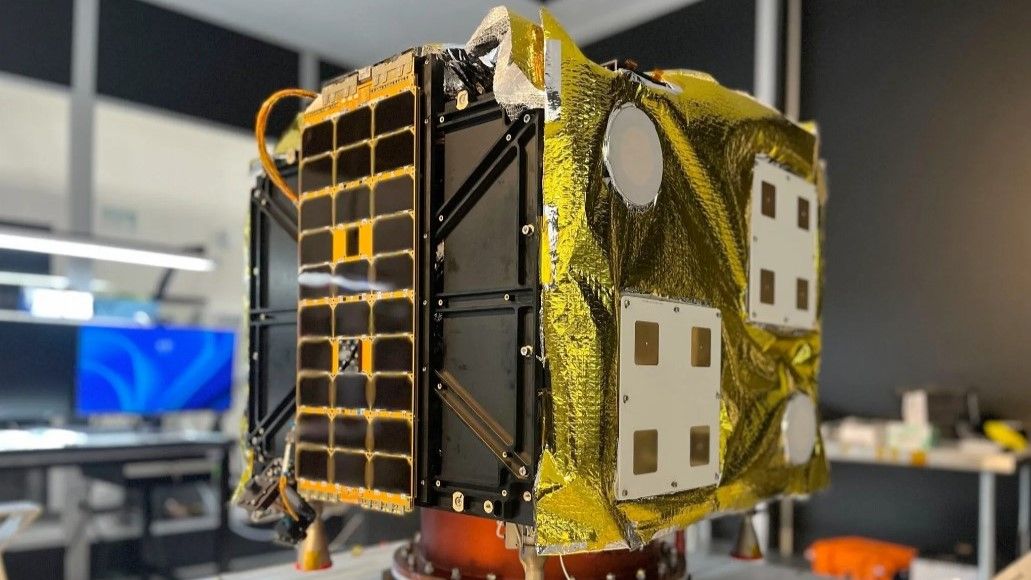New Class of Matter Behaves Like a Solid and a Granule in Way Never Seen Before – Good News Network

From the depths of the engineering department at California Technical Institute comes a big one: a new class of matter.Though scientists are trained not to be, maybe laboratory director Chiara Daraio was being hyperbolic when she described the new material as such, but she and the team that invented it claim it behaves as both a solid and a grain.The materials are called polycatenated architectured materials, or PAMs, and when they are compressed, they act like the hard crystalline latticework like a solid, but when they are subjected to sheer force or lateral force, they behalf like a Newtonian liquid, or more specifically, like a grain—such as sand or rice simply—reorganizing their structure to accommodate the motion.A little like the autolock on a seatbelt, only when the compressive force is ended completely do the PAMs revert to their granular, or liquid state.“We all have a clear distinction in mind when we think of solid materials and granular matter,” Daraio told Caltech Press. “Solid materials are often described as crystalline lattices. This is what you see in the classic ball-and-stick models of atomic, chemical, or larger crystalline structures.”“It is these materials that have formed our conventional understanding of solid matter. The other class of materials is granular, as we see in substances like rice, flour, or ground coffee. These materials are made up of discrete particles, free to move and slide relative to one another,” she said, adding that PAMs defy this binary classification.“With PAMs, the individual particles are linked as they are in crystalline structures, and yet, because these particles are free to move relative to one another, they flow, they slide on top of each other, and they change their relative positions, more like grains of sand.”On a very technical level, the team behind their design used computer modeling to mimic how the lattice-work structure in a solid is formed while replacing the fixed particles at the level of the joints with linked ones which allow for dynamic movement and interchangeability between the elements in an essentially infinite number of possible configurations.There’s something in the invention reminiscent of medieval chain mail, which was designed to prevent the shearing force of blades with hardness, and absorb and disperse incoming energy like water.PAMs were brought to life in Daraio’s lab using 3D printing after experimenting with different materials, from acrylic polymer to metal.CONTINUE EXPLORING THIS TOPIC: Shape-Shifting Fiber Produces Fabrics That Shrink or Expand in Real-Time and Fit into Existing Manufacturing“We started with compression, compressing the objects a bit harder each time. Then we tried a simple shear, a lateral force, like what you would apply if you were trying to tear the material apart,” explained Wenjie Zhou, a postdoctoral scholar in Daraio’s lab.“Finally, we did rheology tests, seeing how the materials responded to twisting, first slowly and then more quickly and strongly.”MORE FUTURISTIC INVENTIONS: Holographic 3D Printing Has the Potential to Revolutionize Multiple Industries, Researchers DemonstrateDaraio herself described them as really a “new class of matter” and said that they can take the form of squishy substances or metal substances as the case may be.In terms of applications, the potential is vast, but soft robotics, biomedical tech, and a variety of protective, insulative gear and equipment appear as obvious fields and products for PAMs.WATCH how these materials move in one’s hand…SHARE This Ingenious Engineering With Your Friends On Social Media… Want A Morning Jolt of Good News?You must be logged in to post a comment.Want A Morning Jolt
of Good News?






